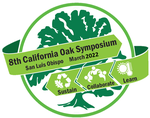Why Keeping the Ranch in the Family Matters: The Rancher's Perspective

Steve and Daniel Sinton
The obvious question is why a bunch of oak scientists, educators and enthusiasts would care whether a ranch remains in the family or not. The better question might be to ask “what happens to oaks when a ranch is sold?” The answer could be that not much changes, but with land prices rising so fast in California and ranches being offered for tens of millions of dollars, most buyers aren’t going to pay the mortgage with cows. The way to make money on expensive land is to develop it, either to crops that generate better revenues, subdivide it to cash out, or be in a position where you already have enough money that the ranch is a hobby or toy, not an occupation.
If ranches are developed, trees are usually in the way. We’ve seen examples where oaks have simply been cleared out, some have died under suspicious circumstances and others have simply been overgrazed to death. A very large portion of our best oak woodlands exist on private ranches. Those woodlands were some of the first lands taken by homesteaders and speculators because they were the best grazing lands. Our parks tend to be concentrated in the mountains, coast, urban areas, or in other types of habitat. So, ranches, and for obvious reasons, ranchers, are really critical to oak success.
We will look not only at what forces are at play to cause the demise of ranching families, but also at the historical and current threats to oaks on ranches that are still working. Ranchers who are in distress, whether economically, socially or by government regulation are the most likely to overgraze or sell out, but there are many ways to help them survive and even thrive. Each new generation presents an opportunity for ranches to be continued, but also a time when ranching traditions are ended. We will talk about strategies that can be used to help keep it in the family.
The role of scientists, educators and researchers remain a vital connection to ranching survivability. Ranchers need resources to understand and implement best practices and to understand emerging concepts related to carbon sequestration, soil health, plant diversity and the role each part of our environment plays in the business of raising cattle. Estate tax strategies, including gifting and conservation easements, need to be paired with finding ways to connect the next generation with the land and family legacy. Diversification without destruction is an important lesson to be told and retold if our oaks are to be protected without crippling the economic sustainability of the landowner. Marketing creativity can help landowners escape the control of large feeders and packers. Sophisticated research on the value of our working lands can stem the urge to regulate without regard to the consequences. There is a lot to be done to protect our oak woodlands, but there are also many ways to accomplish it.
